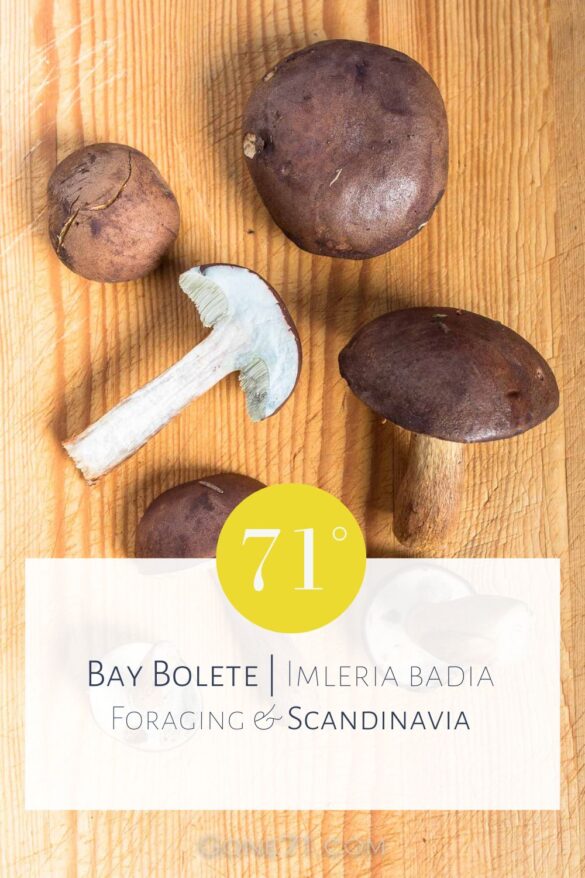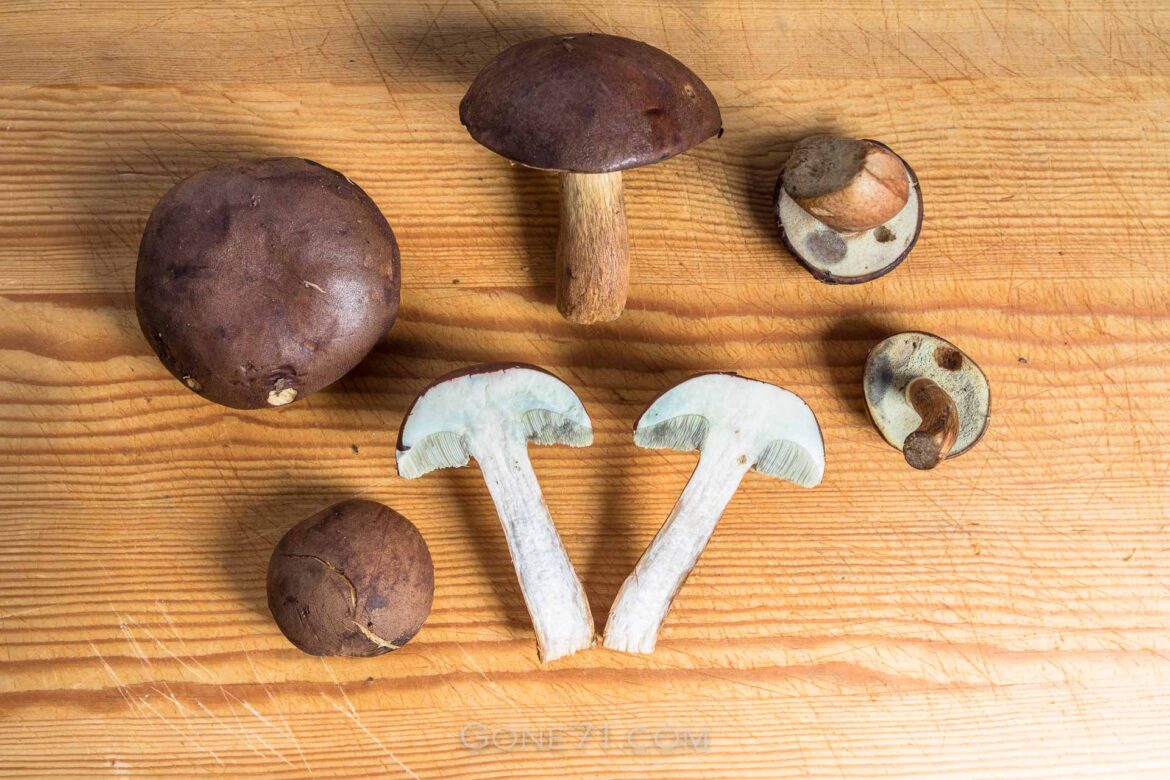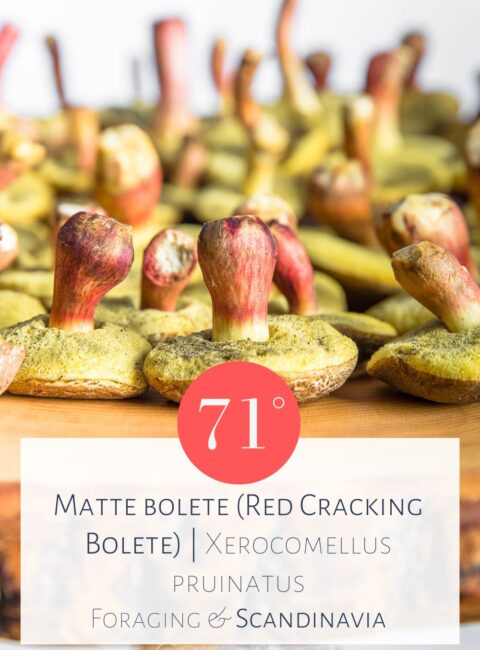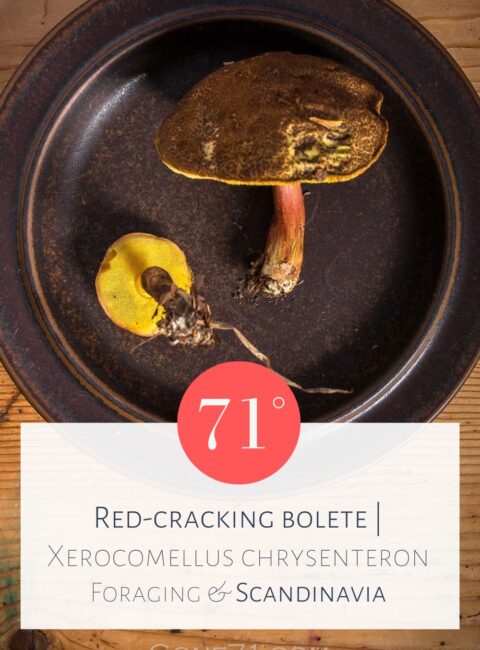swe.: Brunsopp | nor.: Svartbrun rørsopp | fin.: Ruskotatti | dt.: Maronenröhrling
Bay boletes are highly regarded as edible mushrooms in many European kitchens, especially the younger specimen. It is often compared to it’s distant relative the porcini (Boletus edulis) but milder in taste.
Appearance & habitat of the bay bolete (I. badia)
It’s main features are a brown to dark brown cap with fine creamy-yellow pores, which turn darker yellow to olive with age. Upon pressure the pores develop a distinct greenish-blue colour. The stem is similar to the one of porcini but with longitudinal ridges and no net-pattern. It is also slimmer and more cylindrical.
The main foraging time for bay boletes usually begins with the damp late summer days in September and lasts well into late autumn.
cap diameter: 3 – 15 cm
height: 5 – 12 cm
trunk diameter: 1 – 5 cm
months: July – October
colours: (dark) brown smooth cap | brownish trunk, yellow pores.
characteristic: pores of mushroom turn greenish-blue upon contact
habitat: mixed forest, coniferous forest
taste: nutty, pleasant
smell: nutty, pleasant
consumption: cooked
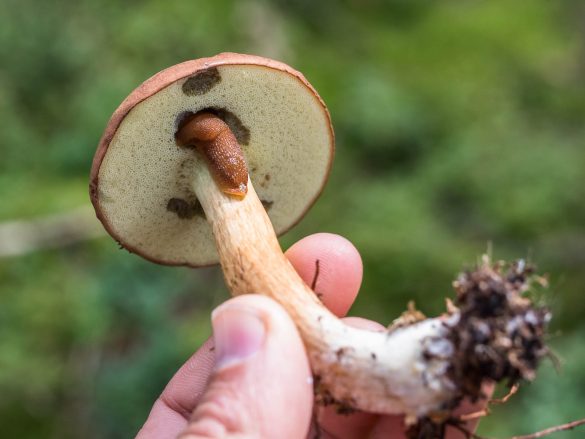
The bay bolete and radioactivity
The downside of bay boletes in Europe is the still high level of radioactive pollution, which is often far above the specified EU limit of 600 becquerels per kilogram. The cesium-137 is particularly bound by the pigments in the cap skin, which are not found in most other classic edible mushrooms. Peeling off the skin of the hat might therefore reduce the radiation exposure. Before you consume these mushrooms in large quantities, you should find out about radiation exposure in the respective collecting area.
Some mushroom consultants here in Central Europe that I know advise against eating them entirely. Other sources say the yearly consumption should not exceed 10 kg. You should do your own research for your specific area on this.
Confusion of bay bolete (I. badia ) with other species
The bay bolete can be confused with other bluing species such as the poisonous bitter beech bolete (Caloboletus calopus), which, however, has a much redder stalk with a net pattern. Despite its very attractive appearance, consumption can lead to longer-lasting gastrointestinal disorders. The light brown-capped mushroom has intense yellow pores that turn blue when pressure is applied.
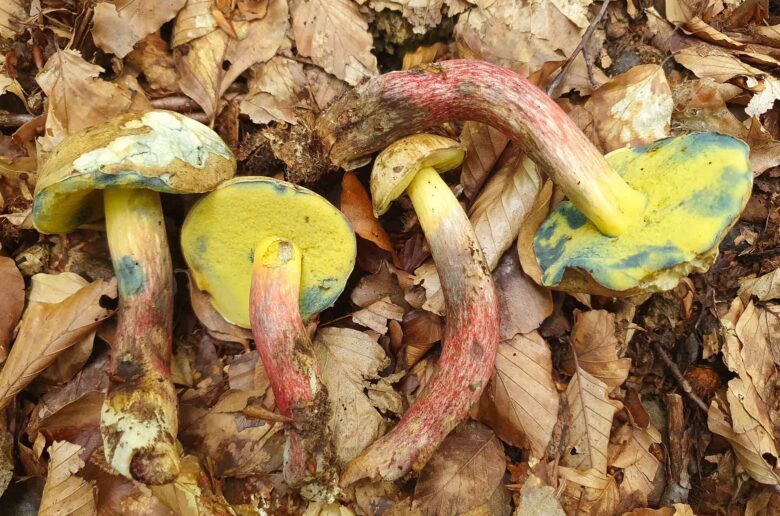
The porcini mushroom is also very similar in appearance, but does not turn blue when pressure is applied and has a net pattern on the stem. A taste test helps to rule out confusion with other bitter-tasting boletus such as the bitter bolete.
Other similar mushrooms are various species from the genus Xerocomellus as the red-carcking bolete or the matte bolete as well as some mushrooms from the genus Xerocomus as the suede bolete (Xerocomus subtomentosus). And there are others of course!
Bay bolete in the kitchen
Bay boletes are exquisite and suitable mushrooms for drying and will refine every meal. They are also excellent fried in butter or olive oil, also in combination with other mushrooms.
Some people even describe it as having the same taste as the porcini mushroom. In any case, it is an enrichment for all mushroom dishes. Bay boletes are also excellent for drying or processing into mushroom powder.
Note that bay boletes contain xerocomic acid and are poisonous eaten raw. The recommended cooking time is at least 15 minutes.
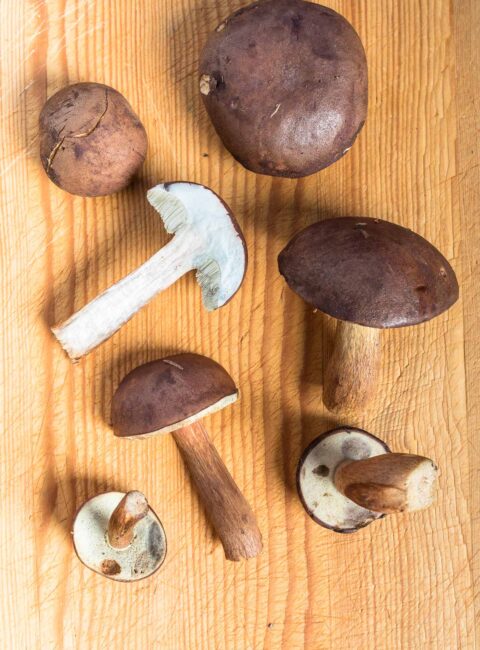
We have compiled this overview with the best of knowledge and belief, but do not claim to be complete and reserve the right to make errors.
Learn more about poisonous mushrooms and mushroom poisons here
↓↓↓
Find some inspiration in other mushroom recipes
↓↓↓
